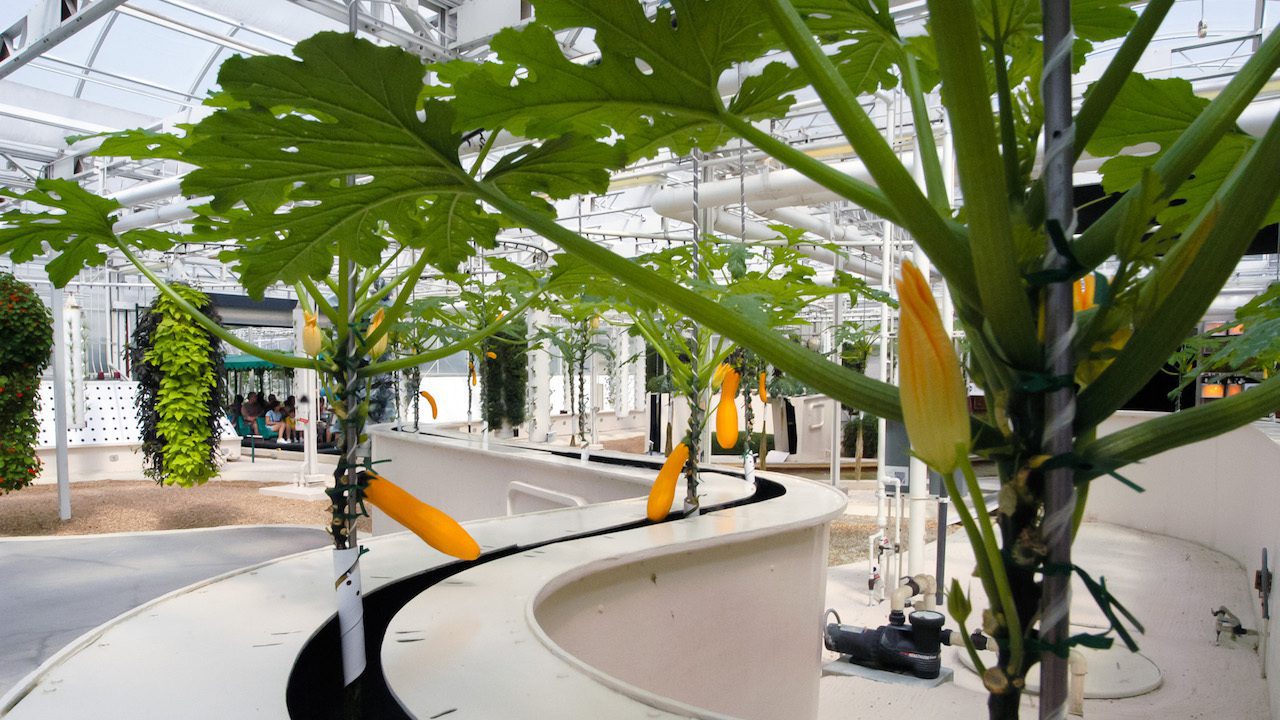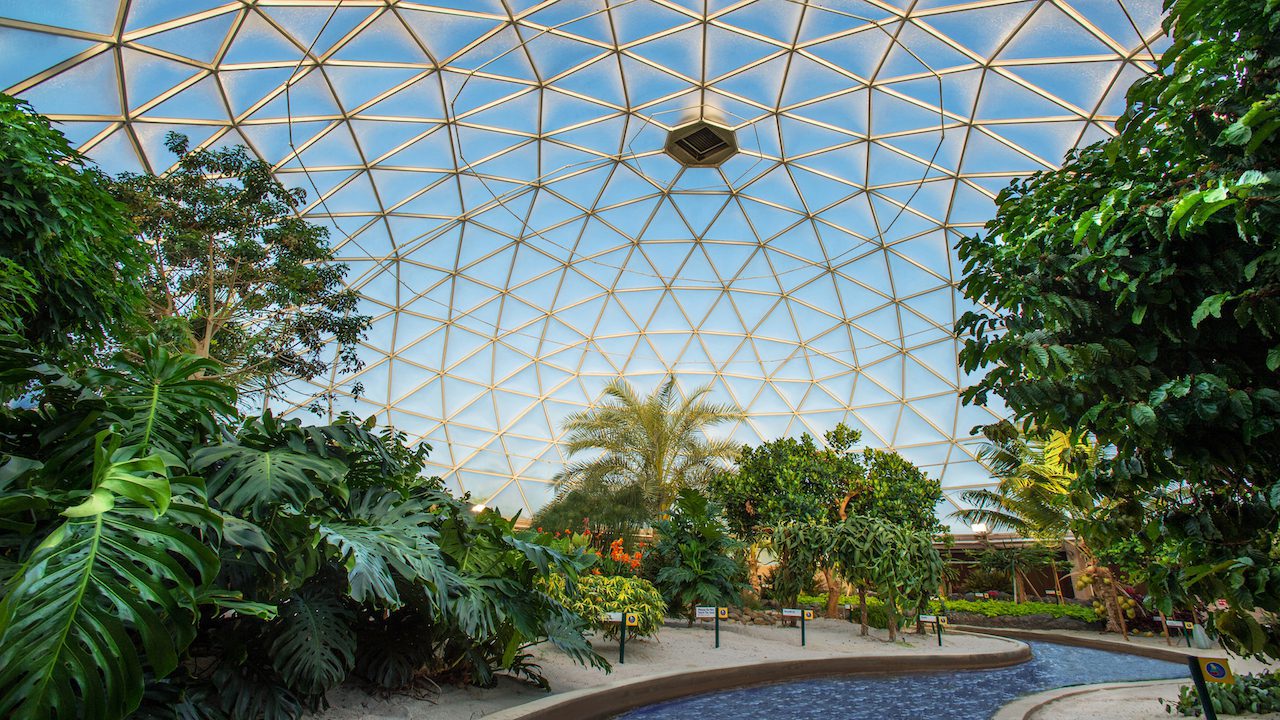Did you know that Walt Disney World in Orlando has a team of horticulturalists dedicated to growing food through innovative and efficient farming techniques like hydroponics? That’s right–the happiest place on earth is working to make the world happier and healthier. All of this agricultural magic happens inside 2.5 million square feet of greenhouses at Disney’s Epcot theme park, where over 30 tons of produce is grown and harvested each year. The facility also features a fish farm where tilapia, bass, and catfish are raised.
Park guests can witness the cutting-edge sustainable practices first-hand while riding a boat that takes guests through Living with the Land, an exhibit that moves through earth’s different biomes and explains the history of farming in the US as well as recent agricultural innovations. This is followed by a tour through several different greenhouse areas. The magic comes in discovering how the park grows its variety of produce. And the next time you visit the land of Mickey Mouse, you can taste the produce and fish which are served at several Epcot and Disney World restaurants.
One technique at the root of Disney’s state-of-the-art farming is hydroponics. While hydroponics may sound daunting, it merely describes growing plants without soil using only water and nutrients. According to Farm Flavor, hydroponics is used throughout Disney’s greenhouses. In Epcot’s Creative greenhouse, “plants are carried on a conveyer that allows their roots to be sprayed with a nutrient solution, be exposed to sunlight, and receive air for circulation.”

There are 27,000 heads of lettuce grown each year at Epcot through a form of hydroponics called the nutrient film technique, according to Farm Flavor. This method “allows a shallow stream of nutrient-infused water to circulate past the plants’ exposed roots, providing the same necessities found in soil. The benefits of hydroponic farming are plentiful. Hydroponics allows for up to 90 percent more efficient use of water than traditional farming, produces 3 to 10 times more yield using an equal amount of space, and a well-managed hydroponic system can yield many crops twice as fast.
Two other kinds of methods used in Epcot’s greenhouses are aeroponics and aquaponics. Aeroponics is similar to hydroponics in that neither uses soil, but in aeroponics, a plant’s roots hang freely in the air and regularly receive an atomized nutrient mist. This kind of technology has even prompted NASA to partner with Epcot “to pioneer new ways of growing food aeroponically” since techniques like this could be valuable for growing plants in space, according to Farm Flavor. Aquaponics is where hydroponics meets aquaculture and “represents the relationship between water, aquatic life, bacteria, nutrient dynamics, and plants which grow together in waterways all over the world,” according to The Aquaponic Source. Through this method, plants clean the water for the fish while the fish produce waste, which is actually nutritious food for the plants. By using this method and growing plants above its small farm fish tanks, Disney creates more while using less.
Vertical growing techniques are another form of innovative farming used in Epcot’s greenhouses. These methods are achieved through stacked gardens or specialized trellises which allow plants to be grown in the air, mimicking a tree’s appearance. The benefits of this include higher production yields and significant space conservation. A marveled example of this is Disney’s famed “tomato tree,” “which produced over 32,000 tomatoes in a 16-month period and was even recognized by Guinness World Records as both the largest and most productive tomato plant in the world.” The plants can even be stacked “with the nutrient solution added to the topmost plant so that it can trickle down, providing food for the plants in the whole stack,” saving space and making room to produce more vegetables.
But perhaps most magical of all is the potential impact of Disney’s innovative farming on visiting guests. Walt Disney World is the most visited vacation resort on the planet, with an average annual attendance of over 58 million visitors. In 2018, Epcot alone saw more than 12 million visitors–nearly 2 million more than the entire population of the state of Georgia. As a purveyor of innovative and eco-friendly farming practices, Disney is helping to inspire the next generation of farmers to find sustainable solutions and forge a greener future. The next Mouseketeer to ride Living with the Land could be the one to change the world of farming.





